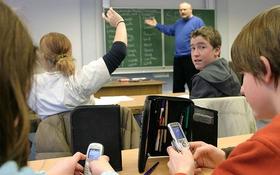Serving 694 students in grades Kindergarten-8, Washington Connections Academy - Mary M. Knight ranks in the bottom 50% of all schools in Washington for overall test scores (math proficiency is bottom 50%, and reading proficiency is bottom 50%).
The percentage of students achieving proficiency in math is 34% (which is lower than the Washington state average of 40%). The percentage of students achieving proficiency in reading/language arts is 51% (which is lower than the Washington state average of 53%).
The student:teacher ratio of 24:1 is higher than the Washington state level of 16:1.
Minority enrollment is 41% of the student body (majority Hispanic), which is lower than the Washington state average of 52% (majority Hispanic).
Quick Stats (2025)
- School Type: Online School
- Grades: Kindergarten-8
- Enrollment: 694 students
- State Accredited: No
- Live Instruction: No
- Rolling Enrollment: No
- Student:Teacher Ratio: 24:1
- Minority Enrollment: 41%
- Overall Testing Rank: Bottom 50% in WA
- Math Proficiency: 34% (Btm 50%)
- Reading Proficiency: 51% (Btm 50%)
- Science Proficiency: 49% (Btm 50%)
- Source: National Center for Education Statistics (NCES), WA Dept. of Education
Top Rankings
Washington Connections Academy - Mary M. Knight ranks among the top 20% of public schools in Washington for:
Category
Attribute
Most improved public schools
School Overview
Washington Connections Academy - Mary M. Knight's student population of 694 students has declined by 53% over five school years.
The teacher population of 29 teachers has grown by 16% over five school years.
School Type
Grades Offered
Grades Kindergarten-8
(offers virtual instruction)
(offers virtual instruction)
Total Students
694 students
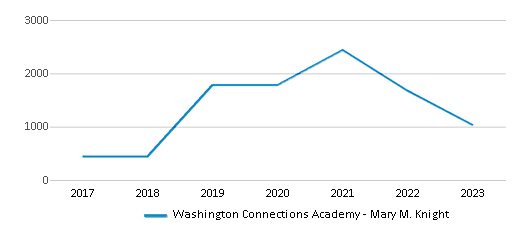
Gender %
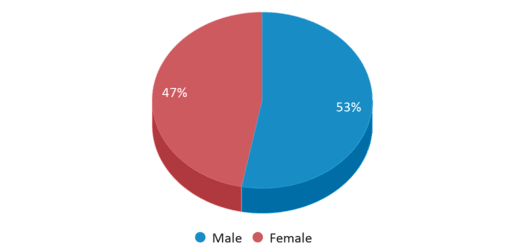
Total Classroom Teachers
29 teachers
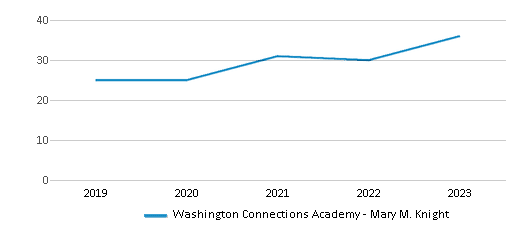
Students by Grade
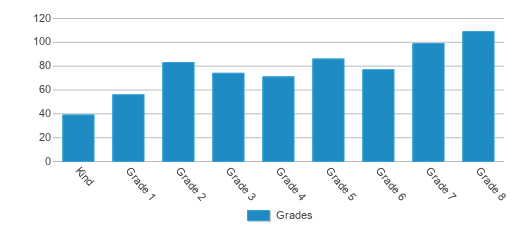
State Accredited Program
No
Personalized Content
No
Live Instruction
No
Rolling Enrollment
No
Flexible Class Schedule
Yes
Accelerated Offerings
No
Classes for Credit/Part Time Options
No
Dedicated College Counselor
No
Tutoring/Mentoring
No
Community Clubs/Activities Offered
No
School Rankings
Washington Connections Academy - Mary M. Knight ranks within the bottom 50% of all 2,113 schools in Washington (based off of combined math and reading proficiency testing data).
The diversity score of Washington Connections Academy - Mary M. Knight is 0.61, which is less than the diversity score at state average of 0.69. The school's diversity has stayed relatively flat over five school years.
Overall Testing Rank
#1156 out of 2113 schools
(Bottom 50%)
(Bottom 50%)
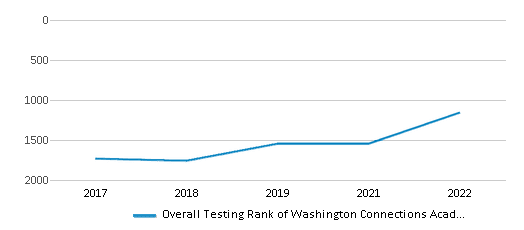
Math Test Scores (% Proficient)
34%
40%
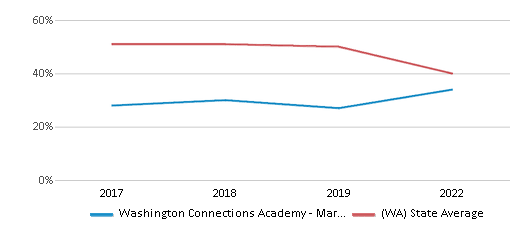
Reading/Language Arts Test Scores (% Proficient)
51%
53%
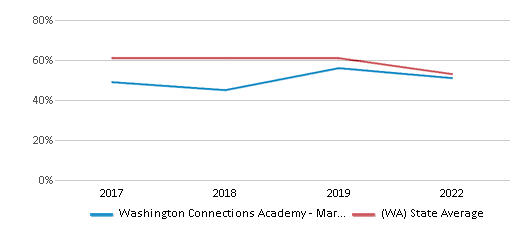
Science Test Scores (% Proficient)
49%
49%
Student : Teacher Ratio
24:1
16:1
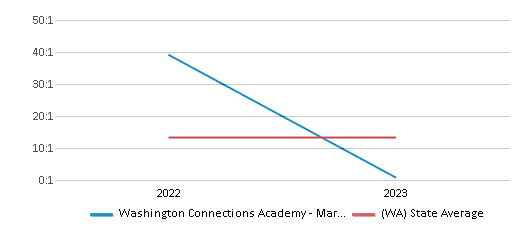
American Indian
2%
1%
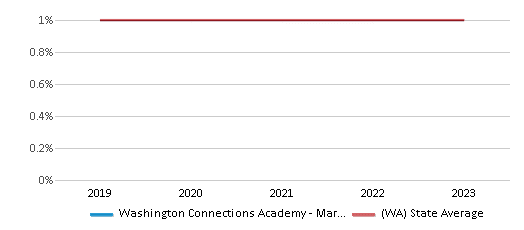
Asian
3%
9%
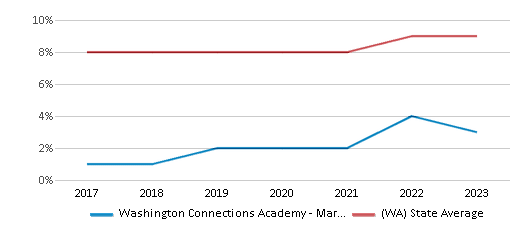
Hispanic
14%
26%
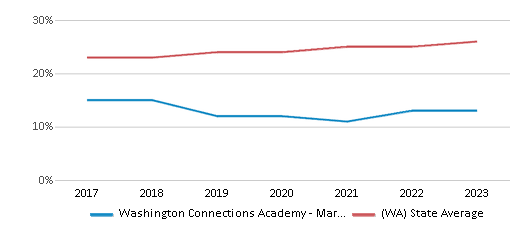
Black
5%
5%
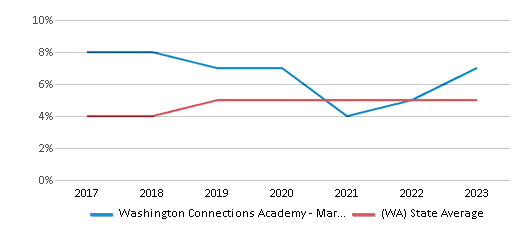
White
59%
48%
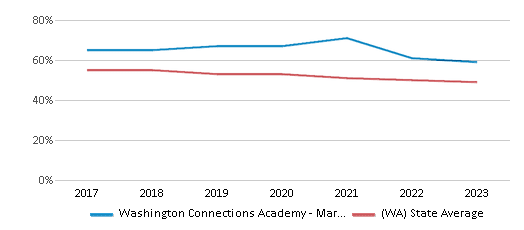
Hawaiian
1%
2%
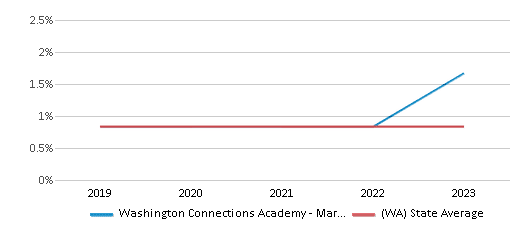
Two or more races
16%
9%
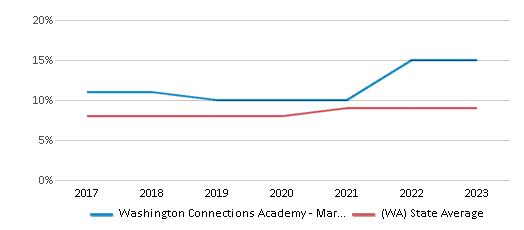
All Ethnic Groups
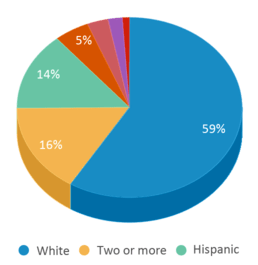
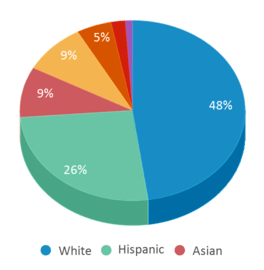
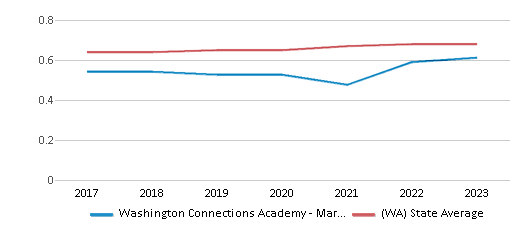
Eligible for Free Lunch
42%
50%
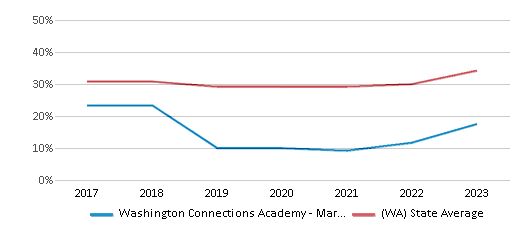
Eligible for Reduced Lunch (21-22)
1%
7%
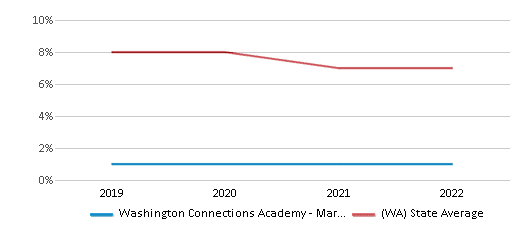
School Statewide Testing
School District Name
Source: National Center for Education Statistics (NCES), WA Dept. of Education
Frequently Asked Questions
What is Washington Connections Academy - Mary M. Knight's ranking?
Washington Connections Academy - Mary M. Knight is ranked #1156 out of 2,113 schools, which ranks it among the bottom 50% of public schools in Washington.
What schools are Washington Connections Academy - Mary M. Knight often compared to?
Washington Connections Academy - Mary M. Knightis often viewed alongside schools like Washington Virtual Academies, Internet Academy by visitors of our site.
What percent of students have achieved state testing proficiency in math and reading?
34% of students have achieved math proficiency (compared to the 40% WA state average), while 51% of students have achieved reading proficiency (compared to the 53% WA state average).
How many students attend Washington Connections Academy - Mary M. Knight?
694 students attend Washington Connections Academy - Mary M. Knight.
What is the racial composition of the student body?
59% of Washington Connections Academy - Mary M. Knight students are White, 16% of students are Two or more races, 14% of students are Hispanic, 5% of students are Black, 3% of students are Asian, 2% of students are American Indian, and 1% of students are Hawaiian.
What is the student:teacher ratio of Washington Connections Academy - Mary M. Knight?
Washington Connections Academy - Mary M. Knight has a student ration of 24:1, which is higher than the Washington state average of 16:1.
What grades does Washington Connections Academy - Mary M. Knight offer ?
Washington Connections Academy - Mary M. Knight offers enrollment in grades Kindergarten-8 (offers virtual instruction).
What school district is Washington Connections Academy - Mary M. Knight part of?
Washington Connections Academy - Mary M. Knight is part of Mary M Knight School District.
School Reviews
Review Washington Connections Academy - Mary M. Knight. Reviews should be a few sentences in length. Please include any comments on:
- Quality of academic programs, teachers, and facilities
- Availability of music, art, sports and other extracurricular activities
Recent Articles

Segregation in K-12 Education: Colonial Era
Explore the origins of educational segregation during the colonial era and the differential treatment of Native American, African American, and white students. This article delves into the historical context, policies, and societal attitudes that shaped early education in colonial America, highlighting the disparities and injustices that persisted within the schooling systems of that time.
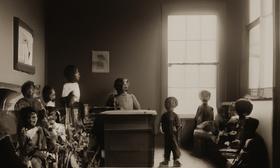
Segregation in K-12 Education: The Jim Crow Era
This article delves into the segregated schooling system that existed during the Jim Crow Era, examining the disparities faced by African American students.

December 16, 2024
Personalized Learning: Revolutionizing Education for the 21st CenturyExplore the revolutionary approach of Personalized Learning in K-12 education. This article discusses the benefits, challenges, and potential of tailoring education to individual student needs, incorporating technology and adaptive learning methods to prepare students for the 21st century.




